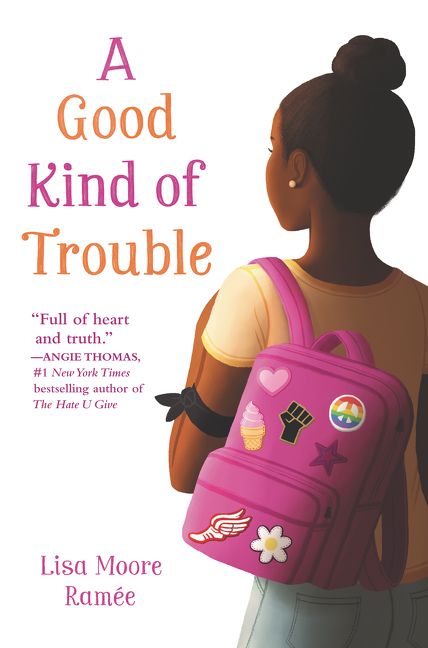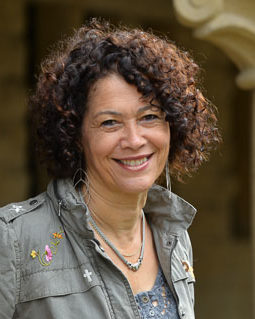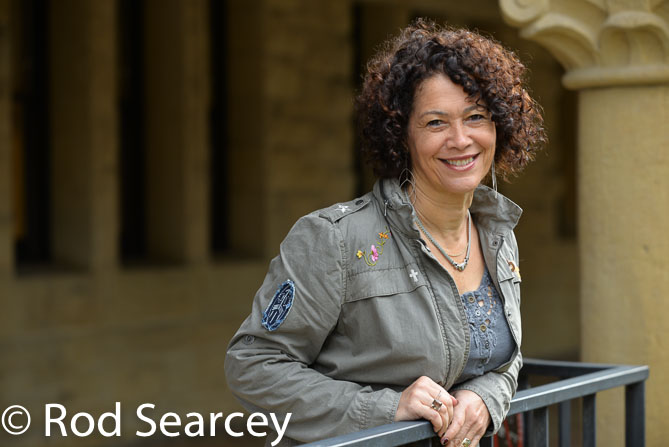interview by Kristi Wright
In A GOOD KIND OF TROUBLE, Lisa Moore Ramée has built a wonderful cast of characters that contribute significantly to the overall world building through their complex relationships. (See our post on the main character, Shayla.) In the interview below we asked her how she went about crafting her characters and their relationships to build such a believable and relatable world.
KidLit Craft: What inspired you to write this story?
Lisa Moore Ramée: I’ve long been inspired by Judy Blume and her ability to get to the heart of issues that young people are dealing with, so I started there, and then thought about my experiences making the switch from elementary school to junior high and what a large role race suddenly played in my world. Then when my daughter started junior high and I saw the same issues with her, I realized it was something that wasn’t at all unique to me and was worth exploring in a novel.
What came first? Shayla as a character or the Black Lives Matter context?

Definitely Shayla came first. I started working on this book before there was a Black Lives Matter movement. But once the almost continuous news stories started playing on the TV reporting on yet another Black person killed by police, I knew a contemporary story with a young Black main character had to show how that movement and the issues that inspired it would play out in her world.
What techniques did you use to create authentic characters?
A lot of the credit is owed to my editor, Alessandra Balzer. The earliest drafts had a very well-developed main character, but not as much time or attention was paid to the supporting characters, and it was Alessandra [who was] asking me to dig deeper with these characters. A technique I use that really helps is to work through a lot of dialogue between characters aloud and hearing whether the voice seems true or not.
What’s something you know about one of your characters that never made it to the page?
I know so much about Bernard! And he is the supporting character that people connect with the most. Bernard doesn’t have the happiest home life, but he tries SO hard. He has a very loving grandmother, but his father is quite tough on him.
Did you have to get rid of any characters? If so, why?
I got rid of two characters. Two boys that the United Nations meets on the first day of school that share their lunch table. The boys provided some comic relief (and potential romantic interest) but ultimately, they didn’t move the plot along in any real way and the book was already on the longish side, so out they went!
You have a large cast of characters. How did you keep track of all of them? What they looked like, their personalities, how they might react to a particular situation…
This is a funny question to me, because it doesn’t feel like a big cast. Maybe because I typically put so many people in my stories. I’m not terribly organized, but once I “know” a character, I know them really well. I don’t have to figure out what they would do, and how they would say something because it’s very clear. (That being said, there are a few times when a character will surprise me and go “off script.”) I will add though, that I don’t actually see my characters too precisely. I mean, I have the basics of hair/eye color, tall/short, etc. but I don’t know what they look like exactly.
How did you go about crafting all the adults who played larger roles in the story?
I’m not sure if I think of the adults any differently than the younger characters. Although what guides ALL the supporting characters is the question, what does the main character need? I knew Shayla needed supportive parents–she was going to go through a lot and I didn’t want every aspect of her life to be a challenge. With the teachers, I knew Shayla needed different sorts of influences in order to make her story ring true. I should add that initially Coach West was going to be imbued with magical “fairy godmother” powers. That was edited out a long time ago though!
For writers tackling character development, do you have any particular words of wisdom?
Well my biggest writing advice is always: READ, and I think this is particularly true for character development! Reading great books with great characters is going to help you develop your own characters. But also listen to people in the age group you’re writing about. I was lucky that not only am I a parent, I was often the chauffeur for my kids’ activities and having a bunch of kids in the car talking about all sorts of things, helped me to keep things real. One thing that also helped me was someone said–I don’t remember who now and I wish I did so I could thank them–don’t ever have young characters refer to themselves as kids. It seems like a tiny thing, but once you start thinking “people” instead of kids, you will see how it affects your perception of them, and keep you from talking down to them. (Young people hate when you do that.)
What’s next on the horizon for Lisa Moore Ramée fans?
I’m very excited about my next project–a yet to be titled middle grade contemporary about Jenae, a girl who is struggling so hard to stay invisible and keep her secrets safe. She rather enjoys being on the outside and definitely has no interest in speaking up (she’d rather be attacked by red ants than give a speech) but a new kid (with some secrets of his own) is forcing her to find her voice. I don’t have a pub date yet, but look for it sometime in 2020!
Thank you, Lisa, for answering our questions! We can’t wait to meet Jenae!

Lisa Moore Ramée was born and raised in Los Angeles and she now lives in the Northern California, with her husband, two kids, and two obnoxious cats. A Good Kind of Trouble is her first novel.
Find her online at lisamooreramee.com and on Twitter @Leeseray.
Kristi Wright (co-editor) writes picture books and middle grade novels. Her goal as a writer is to give children a sense of wonder, a hopefulness about humanity, and a belief in their future. She is represented by Kurestin Armada at Root Literary. She is an active volunteer for SCBWI and a 12 X 12 member. Find her at www.kristiwrightauthor.com and on Twitter @KristiWrite.


COMMENTs:
0